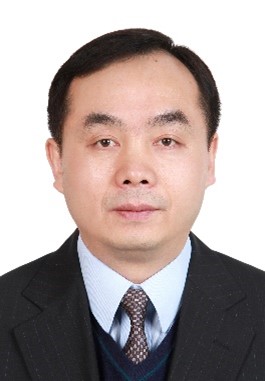Xiaohong Zhang
Silicon Thin Film
Soochow Unviersity
Box 33, 199 Ren'ai Rd, Suzhou Industrial Park, Suzhou, China
Email: xiaohong_zhang@suda.edu.cn
Biography
|
ZHANG, Xiaohong Ph.D., Professor
Academic History: 2014-Now Professor, Soochow University 2000-2014 Professor, Technical Institute of Physics and Chemistry of CAS 2003-2004 Senior Visiting Scholar, Cavendish Laboratory, Cambridge University 1998-2000 Senior Visiting Scholar, City University of Hong Kong 1996-1998 Postdoctoral Fellow, Institute of Photographic Chemistry of CAS 1992-1996 Ph.D., Beijing Institute of Technology 1989-1992 M.S., Beihang University 1985-1989 B.S., Beihang University
Research Experience and Accomplishments: Dr. Xiaohong Zhang is an internationally recognized outstanding scientist in the field of organic/nanostructured optoelectronic materials, in three thrusts of this research area, including i) silicon micro/nano-structures and their applications, ii) TADF materials based on intermolecular charge-transfer transitions and their OLEDs, and iii) organic single crystals and optoelectronic devices, he has come up with original, internationally recognized and highly appraised achievements. He has published over 450 papers in international journals, and 3 book chapters with a total of >16000 citations and an H-index of 67 (Web of Science). He is the inventor of over 50 patents many of which are licensed or in active use by large companies and startups that he has co-founded.
|
|
ZHANG, Bingchang Ph.D., Lecturer
Academic History: 2020-Now Lecturer, Soochow University 2015-2019 Postdoctoral Fellow, Soochow University 2010-2015 Ph.D., the University of Chinese Academy of Sciences 2006-2010 B.S., Shandong University
Research Experience and Accomplishments: Dr. Bingchang Zhang has focused on silicon micro/nano-structures and their applications for more than ten years. He has published over 20 papers in international journals such as Adv. Mater., Adv. Funct. Mater., Angew. Chem. Inter. Ed., Nano Lett.. He is the inventor of 8 patents. He hosts multiple projects from the National Natural Science Foundation of China and the National Natural Science Foundation of Jiangsu Province. Some representative papers are listed below:
[1] B. Zhang, Y. Shi, J. Mao, S. Huang, Z. Shao, C. Zheng, J. Jie*, X. Zhang*, Single-Crystalline Silicon Frameworks: a New Platform for Transparent Flexible Optoelectronics, Adv. Mater., 2021, 2008171. [2] J. Mao#, B. Zhang#, Y. Shi, X. Wu, Y. He, D. Wu, J. Jie*, C.-S. Lee*, X. Zhang*, Conformal MoS2/Silicon Nanowire Array Heterojunction with Enhanced Light Trapping and Effective Interface Passivation for Ultraweak Infrared Light Detection, Adv. Func. Mater., 2021, 2108174. [3] S. Huang, B. Zhang*, Y. Lin, C.-S. Lee*, X. Zhang*, Compact Biomimetic Hair Sensors Based on Single Silicon Nanowires for Ultrafast and Highly-Sensitive Airflow Detection, Nano Lett., 2021, 21, 4864. [4] S. Huang, B. Zhang*, Z. Shao, L. He, Q. Zhang, J. Jie*, X. Zhang*, Ultraminiaturized Stretchable Strain Sensors Based on Single Silicon Nanowires for Imperceptible Electronic Skins, Nano Lett., 2020, 20, 2478. [5] B. Zhang, H. Wang*, L. He, C. Zheng, J. Jie, Y. Lifshitz, S.-T. Lee*, X. Zhang*, Centimeter-Long Single-Crystalline Si Nanowires. Nano Lett., 2017, 17, 7323. |
Abstract for Presentation
Ultralong Silicon Nanowires for Flexible Sensors
Flexible sensitive materials are important for the development of flexible sensors. Silicon is an excellent sensitive material for traditional rigid sensors. However, its applications in flexible sensors have been hindered by the rigidity and brittleness of commonly used Si wafers. Our group has long focused on silicon nanowires (SiNWs),[1,2] which perform well in flexibility due to reduced material thickness.[3] After systematic studies of SiNW growth, SiNWs with a record length up to 2 cm were successfully synthesized through a temperature-gradient and massive-metal assisted chemical vapor deposition (CVD) method.[4] Besides good flexibility, they can be easily manipulated, assembled and fabricated into devices benefiting from the macroscopic length. By using single cm-SiNWs as sensing materials, flexible strain sensors, stretchable strain sensors, biomimetic hair airflow sensors and integrated device arrays were demonstrated.[5,6] These sensors all characterized miniaturization and high sensitivity, showing great potential for wearable applications. Moreover, ultra-long SiNWs could also been woven into fabrics due to their large aspect ratio.[7] SiNW fabrics feature high flexibility, good tailorability and light weight, rendering them ideal for fabricating flexible sensors. It is expected that the continuous progresses in preparation and applications of ultra-long SiNWs will promote the development of flexible electronics.
Figure 1. A single centimeter-long silicon nanowire with good flexibility.
References
[1] H. Wang, X. Zhang*, X. Meng, S. Zhou, S. Wu, W. Shi, S. Lee*, Angew. Chem. Int. Ed., 44 (2005) 6934.
[2] H. Wang, J. Wang, Z. Cao, W. Zhang, C.-S. Lee*, S.-T. Lee*, X. Zhang*, Nat. Commun., 6 (2015) 6412.
[3] B. Zhang, Y. Shi, J. Mao, S. Huang, Z. Shao, C. Zheng, J. Jie*, X. Zhang*, Adv. Mater., 33 (2021) 2008171.
[4] B. Zhang, H. Wang*, L. He, C. Zheng, J. Jie, Y. Lifshitz, S.-T. Lee*, X. Zhang*, Nano Lett., 17 (2017) 7323.
[5] S. Huang, B. Zhang*, Z. Shao, L. He, Q. Zhang, J. Jie*, X. Zhang*, Nano Lett., 20 (2020) 2478.
[6] S. Huang, B. Zhang*, Y. Lin, C.-S. Lee*, X. Zhang*, Nano Lett., 21 (2021) 4684.
[7] B. Zhang, J. Jie*, Z. Shao, S. Huang, L. He*, X. Zhang*, Nano Res., 12 (2019) 2723.
WELCOME TO CHINA TO ATTEND THE ICANS
23-26 August, Nanjing, China
Connect with us:




